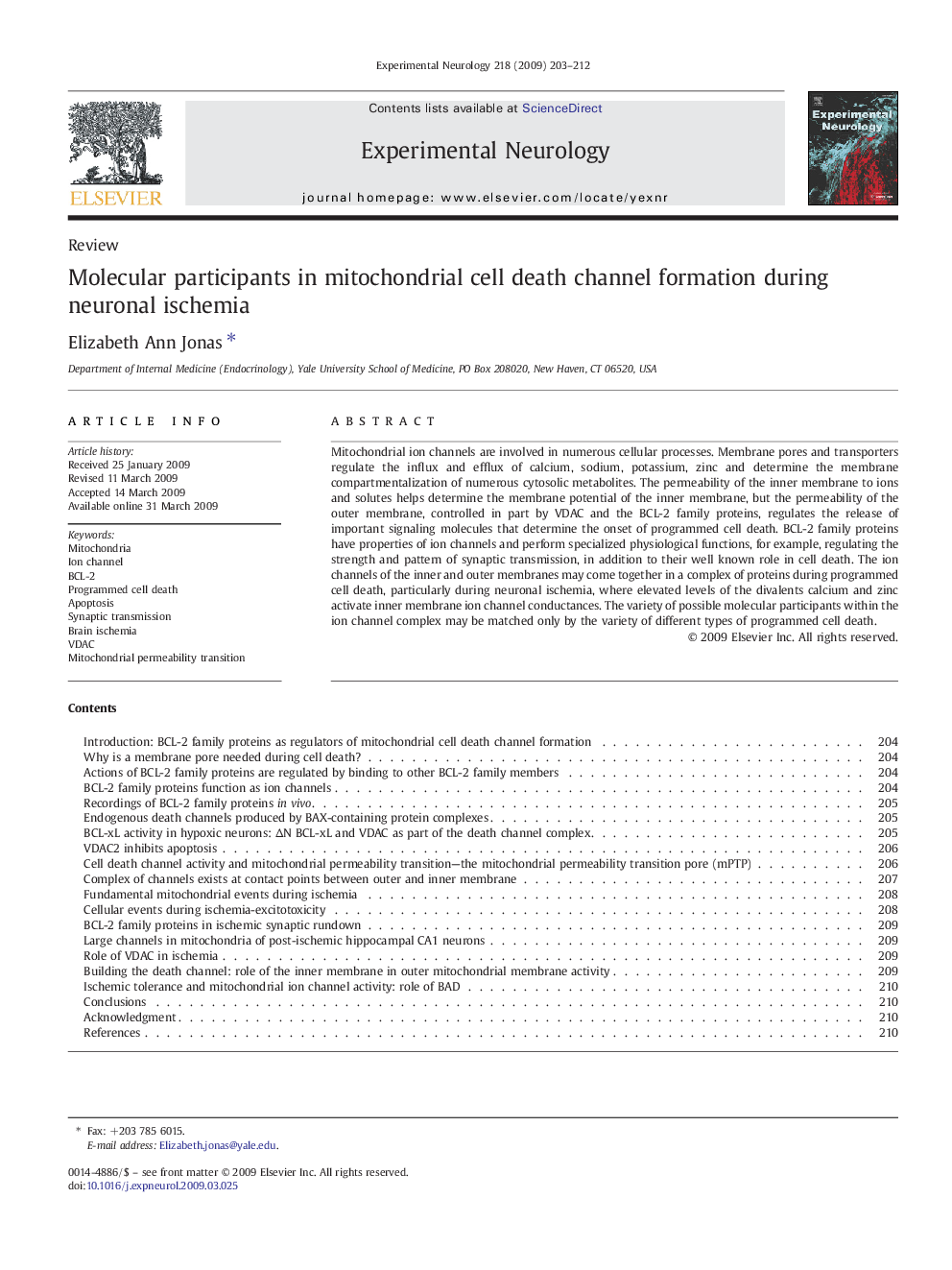| Article ID | Journal | Published Year | Pages | File Type |
|---|---|---|---|---|
| 3056217 | Experimental Neurology | 2009 | 10 Pages |
Abstract
Mitochondrial ion channels are involved in numerous cellular processes. Membrane pores and transporters regulate the influx and efflux of calcium, sodium, potassium, zinc and determine the membrane compartmentalization of numerous cytosolic metabolites. The permeability of the inner membrane to ions and solutes helps determine the membrane potential of the inner membrane, but the permeability of the outer membrane, controlled in part by VDAC and the BCL-2 family proteins, regulates the release of important signaling molecules that determine the onset of programmed cell death. BCL-2 family proteins have properties of ion channels and perform specialized physiological functions, for example, regulating the strength and pattern of synaptic transmission, in addition to their well known role in cell death. The ion channels of the inner and outer membranes may come together in a complex of proteins during programmed cell death, particularly during neuronal ischemia, where elevated levels of the divalents calcium and zinc activate inner membrane ion channel conductances. The variety of possible molecular participants within the ion channel complex may be matched only by the variety of different types of programmed cell death.
Keywords
Related Topics
Life Sciences
Neuroscience
Neurology
Authors
Elizabeth Ann Jonas,
